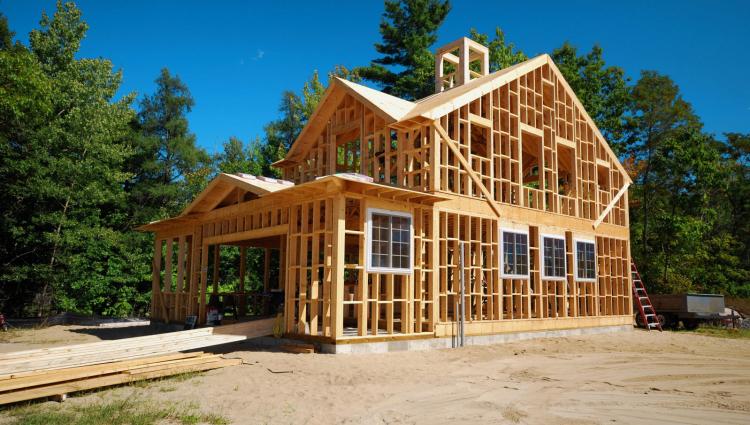When it comes to maintaining a comfortable indoor environment year-round, timing is everything—especially with HVAC replacement. Although many homeowners and businesses only consider upgrading their system when it fails, strategic planning around the seasons can save money, prevent disruptions, and ensure optimal system performance. Seasonal timing influences everything from availability of professionals to equipment efficiency and cost.
In this blog, we’ll examine how aligning your HVAC replacement with the right season benefits not just your budget but also your long-term comfort and energy efficiency. Whether you’re replacing outdated systems or preparing for extreme temperatures, understanding seasonal dynamics can make all the difference.
Maximizing Comfort During Peak Seasons
The comfort of any home or commercial space relies heavily on properly functioning heating and cooling systems. During peak seasons—summer and winter—demand for HVAC systems surges as temperatures become more extreme. Unfortunately, waiting until these high-demand periods to replace your system often results in uncomfortable indoor conditions, long wait times for service, and higher installation costs.
Spring and fall are considered “shoulder seasons” for HVAC professionals. During these periods, temperatures are mild, meaning your home or building is less dependent on heating or cooling. Scheduling your HVAC replacement during this window not only reduces the risk of discomfort but also gives technicians greater scheduling flexibility, leading to faster service.
Avoiding Delays From Busy Schedules and Limited Inventory
Seasonal timing plays a major role in availability—both in terms of workforce and equipment. During peak months, HVAC contractors are often fully booked with urgent repair or installation requests, which means your project might be pushed further out than you’d like. Additionally, popular HVAC units and parts may be out of stock due to increased demand.
By planning your HVAC replacement for early spring or fall, you avoid these bottlenecks. HVAC professionals can more easily dedicate time to system evaluation, installation, and testing. This allows for a more thorough and customized installation process, ensuring long-term performance and fewer post-installation issues.
Taking Advantage of Seasonal Cost Efficiencies
The cost of replacing an HVAC system varies throughout the year. Manufacturers and suppliers often run promotions or offer rebates during off-peak seasons to stimulate demand. Homeowners and businesses can take advantage of these discounts to reduce upfront costs.
Moreover, HVAC companies may offer lower labor rates or seasonal specials during quieter months. When you’re not competing with emergency calls during a heatwave or cold snap, you may secure better pricing and more favorable service agreements. This seasonal cost efficiency contributes to a more budget-friendly replacement process.
Improving Energy Efficiency Before High Usage Periods
Another crucial benefit of seasonal timing is preparing your property for periods of high energy usage. Replacing your HVAC system just before the height of summer or the depth of winter ensures that you enter these demanding seasons with a system operating at peak efficiency. A modern unit with updated technology will run more efficiently than outdated models, helping you manage energy bills and avoid unnecessary strain on your system.
Midway through the year is also an ideal time for evaluating heating and cooling needs. For older homes especially, HVAC replacement coupled with heating unit installation offers the opportunity to reevaluate ductwork, insulation, and energy efficiency standards.
Many homeowners turn to trusted providers like Steele Bros Heating for thorough evaluations and installation support during these seasons. When you align upgrades with optimal timing, you not only protect your investment but also boost your home’s overall energy performance.
Ensuring System Longevity Through Scheduled Transitions
Planning HVAC replacement as a proactive measure, rather than waiting for a breakdown, significantly improves the longevity of your new system. An emergency replacement in the middle of a heatwave might mean settling for an undersized or rushed installation. However, scheduling the project during a low-demand season allows contractors the time needed to size and configure the system correctly, ensuring its long-term durability.
Additionally, many HVAC companies offer extended service packages or warranties for replacements done during their off-season, encouraging property owners to plan ahead. When paired with routine care—such as HVAC maintenance service—your newly installed system is better positioned to serve you reliably for years to come.
Reducing Stress With Predictable Planning
Perhaps one of the most underrated benefits of seasonal timing is the peace of mind it brings. Emergency HVAC replacements tend to be stressful, expensive, and inconvenient. By planning ahead and choosing the right time of year, property owners can prepare budgets, schedule work during operational downtimes, and avoid last-minute disruptions. Whether for residential properties or businesses managing larger systems, predictable planning creates a smoother experience overall.
For homeowners, this can mean scheduling replacement before summer vacations or school schedules shift. For businesses, this might involve coordinating work during off-hours or lighter seasons. Planning ahead ensures you’re not scrambling to fix a broken unit but rather transitioning into an energy-efficient system with minimal interruption.
Positioning Your Property for Future Seasons
Once the new system is in place, your property is immediately better prepared for the seasonal extremes ahead. With improved energy regulation, cleaner airflow, and better temperature consistency, the benefits are felt immediately. Providers like Trane South emphasize the value of long-term planning, especially in climates where heating and cooling needs fluctuate sharply.
By addressing heating unit installation and HVAC replacement together, you future-proof your property and streamline its seasonal transitions. When the next winter storm or summer heatwave arrives, you can be confident your system is up to the task—efficient, modern, and optimized for your space.




